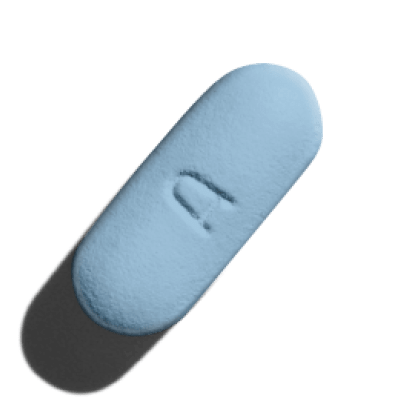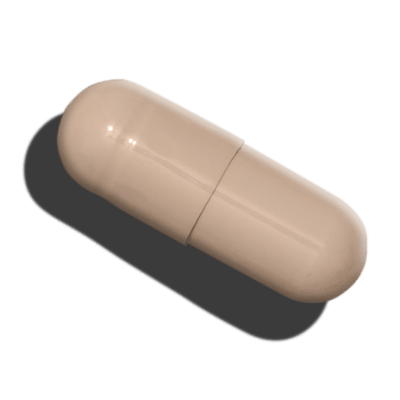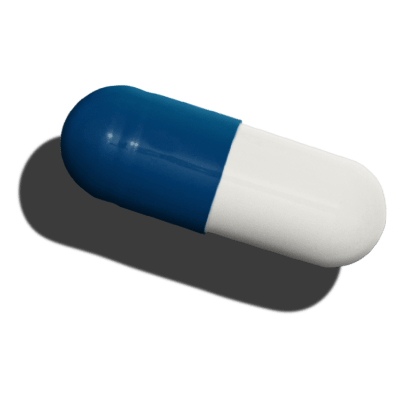Content
Seeking support for your mental health?
Citalopram (Celexa®) Side Effects Explained

If you’ve been diagnosed with depression, your healthcare provider may prescribe a medication called citalopram.
Citalopram is a selective serotonin reuptake inhibitor (SSRI). It’s available as Celexa® and as a generic medication.
Research shows that citalopram — like other SSRIs — treats symptoms of depression and helps to improve quality of life.
Content
However, like other medications used to treat depression, citalopram can cause side effects and interact with other drugs.
Read on to learn more about citalopram side effects and interactions below, along with details on how each issue may affect you if you’re prescribed this medication.
You’ll also find information to help you use citalopram safely and effectively while you’re being treated for depression.
What Is Citalopram?
Citalopram is a type of selective serotonin reuptake inhibitor, or SSRI. It’s approved by the FDA as a treatment for depression (major depressive disorder, or MDD).
It’s also used off-label to treat several other psychiatric disorders, including:
Obsessive-compulsive disorder (OCD)
Generalized anxiety disorder (GAD)
Social anxiety disorder (SAD)
Panic disorder
Separation anxiety disorder
Like other SSRIs, citalopram treats depression by increasing the amount of the neurotransmitter serotonin in your brain and body.
Serotonin is involved in several important processes, including controlling your mood, anxiety levels and sleep-wake cycle.
Research has found that people with depression often have low levels of serotonin, as well as other mood-related neurotransmitters.
It usually takes one to four weeks for citalopram to start working as a treatment for depression, although a full response often requires eight to 12 weeks of consistent use.
How long you stay on citalopram will depend on a variety of factors, such as the severity of your depression.
Common Citalopram Side Effects
Citalopram is a common treatment for depression that’s used by millions of people in the United States and many more worldwide.
Like all medications, citalopram can cause side effects. Although most citalopram side effects are mild and often temporary, a small percentage of people who use citalopram may experience more severe or persistent side effects.
Here are the most common adverse effects of citalopram, as well as research data on how often each side effect occurs:
Nausea, Diarrhea and Other Digestive Side Effects
Much like other antidepressants, common citalopram side effects can include those that affect the digestive system, such as nausea, diarrhea, stomach pain, vomiting, heartburn and constipation.
Research shows that nausea is the most common citalopram side effect, with 21 percent of users reporting it in clinical trials for Celexa.
Nausea and other digestive issues may occur as a result of citalopram’s effects on 5-HT3 receptors.
These side effects may go away over the course of a few weeks as your body gets used to the medication.
If you feel nauseous after taking citalopram, try taking your medication with a small amount of food, or ask your healthcare provider about adjusting or dividing your dosage.
If you have persistent or severe digestive side effects while taking citalopram, your healthcare provider may suggest using additional medication.
Dry Mouth
Dry mouth is a common side effect of antidepressants, including citalopram. In clinical trials of Celexa, 20 percent of people reported experiencing this side effect.
In addition to affecting your ability to speak, chew and swallow, dry mouth can contribute to an increased risk of mouth sores and infections.
If you develop dry mouth while using citalopram, try keeping a glass of water available for when your mouth feels overly dry.
Some people find that chewing sugar-free gum helps to stimulate saliva production and prevent dryness.
It may also help to avoid substances that can worsen dry mouth such as caffeine, alcohol and tobacco.
If you have persistent dry mouth that doesn’t get better over time, reach out to your healthcare provider for assistance.
Sweating
Increased sweating, or hyperhidrosis, is another common antidepressant side effect that may occur while you’re using citalopram.
This side effect is often referred to as antidepressant-induced excessive sweating (ADIES). It affects four to 22 percent of people who take antidepressants.
Clinical trials show that around 11 percent of people prescribed citalopram for depression report an increase in sweating.
When this side effect persists, it’s best to contact your healthcare provider. They may prescribe additional medication to help control sweating and reduce the severity of this side effect.
Insomnia (Difficulty Falling or Staying Asleep)
Insomnia, a sleep disorder that can cause difficulty falling or staying asleep, is a common side effect of citalopram and other SSRIs.
You may find it more difficult to fall asleep while using citalopram. Alternatively, you may sleep normally but wake frequently during the night, or wake up at an earlier time than usual and not be able to return to sleep.
Insomnia is a common symptom of depression, too, so the issue may not always be caused by citalopram.
Interestingly, research shows that many people with depression report improvements in sleep quality after starting treatment with citalopram.
If you find it difficult to fall or stay asleep while using citalopram, taking your medication in the morning may make it easier to fall asleep at a normal time.
Making small changes to your lifestyle — such as avoiding caffeine after midday or exercising in the daytime — may also help you fall and stay asleep at night.
And if you have recurring insomnia, your healthcare provider may prescribe medication to help you fall asleep.
Be sure to inform your healthcare provider before making any changes to the way you use citalopram or other medications.
Fatigue and Somnolence
Fatigue and somnolence (excessive sleeping, or severe daytime sleepiness) are common side effects of antidepressants, including citalopram.
After you start treatment with citalopram, you may feel physically fatigued and more in need of sleep than normal.
You may feel the need to take naps during the daytime or sleep for longer periods of time at night.
These side effects often occur during the first few weeks of treatment and may improve as your body becomes used to the effects of citalopram.
You may be able to reduce the severity of this side effect by taking citalopram before you go to bed, making changes to your activity level or by adjusting your citalopram dosage.
Make sure to talk to your healthcare provider before making any changes to the way you take citalopram or any other prescription medication.
Sexual Side Effects
Citalopram is associated with sexual side effects, including a reduced level of interest in sexual activity, difficulty reaching orgasm and ejaculating and erectile dysfunction (ED).
In women, citalopram and other SSRIs can cause a reduced level of interest in sex and vaginal lubrication issues.
Sexual side effects are a common issue with many antidepressants, including other SSRIs and serotonin-norepinephrine reuptake inhibitors, or SNRIs.
You can read more about these issues in this guide to antidepressants and sexual side effects.
If you develop a reduced libido or other sexual performance issues while using citalopram, your healthcare provider may adjust your dosage or prescribe a different medication to treat your depression symptoms such as bupropion XL (a generic version of Wellbutrin XL®).
Less Common Citalopram Side Effects
Citalopram may also cause other, less common side effects. Like the side effects listed above, these may occur during the first few weeks of treatment.
Less common citalopram side effects can include:
Tremors
Arthralgia (joint pain) and/or myalgia (muscle pain)
Anxiety
Anorexia
Agitation
Yawning
Upper respiratory tract infection
Rhinitis (inflammation of the nose)
Sinusitis (inflammation of the sinuses)
These side effects may improve over time. If you have persistent or severe side effects, it’s best to contact your healthcare provider for personalized assistance.
Although uncommon, citalopram and other antidepressants may cause serious side effects and allergic reactions that require immediate medical attention.
Seek emergency medical help if you develop any of the following symptoms while using citalopram:
Shortness of breath
Difficulty breathing or swallowing
Fast, slow or irregular heartbeat
Unusual bleeding or bruising
Swelling that affects your face, mouth or limbs
Hoarse voice
Hallucinations
Difficulty thinking, concentrating or remembering things
Chest pain
Headache
Dizziness or unsteadiness
Hives or blisters
Rash and itching
Fainting
Excessive sweating
Fever
Loss of coordination
Twitching or stiff muscles
Coma (loss of consciousness)
Confusion
Seizures
Like other antidepressants, citalopram features an FDA warning notifying users of an increased risk of suicidal thoughts and/or behavior in people under the age of 24.
If you’re prescribed citalopram and experience a sudden worsening of your depression, suicidal or self-harming thoughts or other concerning symptoms, you should seek immediate assistance from your healthcare provider.
Citalopram Drug Interactions
Citalopram can interact with other medications, including other antidepressants and medications used to treat mood disorders.
Medications that may interact with citalopram include:
Other antidepressants, particularly monoamine oxidase inhibitors (MAOIs), which can cause serious, potentially life-threatening side effects when used with citalopram. Do not use citalopram if you have taken any MAOI medications within 14 days. Other antidepressants that may interact with citalopram include tricyclic antidepressants (TCAs), tetracyclic antidepressants (TeCAs), SNRIs and atypical antidepressants.
Medications and supplements that increase serotonin levels such as antipsychotic medications, dopamine antagonists, triptans, lithium, over-the-counter products such as St. John's Wort and illicit drugs such as ecstasy (MDMA). These medications can cause serotonin syndrome, a potentially life-threatening range of symptoms associated with high serotonin levels.
Cardiovascular medications, including medications used to treat high blood pressure, beta-blockers, blood thinners such as warfarin and other medications for cardiovascular disease.
Nonsteroidal anti-inflammatory drugs (NSAIDs) such as aspirin, ibuprofen and naproxen among others. These medications may increase your risk of bleeding.
Other medications not listed above may also interact with citalopram. Make sure to fully inform your healthcare provider about all medications you currently take or have recently taken before using citalopram.
How to Use Citalopram Effectively
Citalopram is an easy medication to use. It comes as a tablet or liquid solution and is typically prescribed for use one time per day, either with or without food.
It’s best to take citalopram at approximately the same time every day. You can take citalopram in the morning or evening, although it’s best to discuss the time you’ll use your medication with your healthcare provider before you start treatment.
Your healthcare provider may prescribe a low dose of citalopram during your first few weeks of treatment and then adjust your dosage over time.
If you miss a dose of citalopram, take the missed dose as soon as you remember. If it’s almost time for your next dose of citalopram, skip the missed dose and take citalopram at your normal dosage. Do not take a double dose of citalopram.
Citalopram can take one to four weeks to start working, although you may not feel its full effects for two to three months.
Make sure to closely follow your healthcare provider’s directions and take citalopram exactly as prescribed, even if you don’t notice any improvements right away.
If you don’t experience any improvement in your mood from citalopram after several months, it’s important to talk to your healthcare provider before making any changes to the way you use this medication.
Do not suddenly lower your dosage or stop taking citalopram without talking to your healthcare provider.
Stopping citalopram abruptly may cause withdrawal symptoms such as anxiety and a worsening of your depression symptoms.
Citalopram is one of several common SSRIs used as part of mental health treatment for major depressive disorder.
Yet like other antidepressants, you could experience citalopram side effects during the first weeks of treatment.
First things first, if you experience any side effects, contact your healthcare provider for help.
They may adjust your dosage or suggest changes to the way you use citalopram to help keep yourself safe and side-effect-free.
For more about citalopram side effects as well as those from other medications used for depression, check out this complete guide to SSRIs.
12 Sources
Hims & Hers has strict sourcing guidelines to ensure our content is accurate and current. We rely on peer-reviewed studies, academic research institutions, and medical associations. We strive to use primary sources and refrain from using tertiary references.
- Shoar, N.S., Fariba, K. & Padhy, R.K. (2021, February 19). Citalopram. StatPearls. Retrieved from https://www.ncbi.nlm.nih.gov/books/NBK482222/
- What is Serotonin? (2018, December). Retrieved from https://www.hormone.org/your-health-and-hormones/glands-and-hormones-a-to-z/hormones/serotonin
- Citalopram. (2018, January 15). Retrieved from https://medlineplus.gov/druginfo/meds/a699001.html
- Celexa® (citalopram hydrobromide) Tablets/Oral Solution. (2012, March 19). Retrieved from https://www.accessdata.fda.gov/drugsatfda_docs/label/2012/020822s042,021046s019lbl.pdf
- Ferguson, J.M. (2001, February). SSRI Antidepressant Medications: Adverse Effects and Tolerability. The Primary Care Companion to the Journal of Clinical Psychiatry. 3 (1), 22–27. Retrieved from https://www.ncbi.nlm.nih.gov/pmc/articles/PMC181155/
- Kelly, K., Posternak, M. & Jonathan, E.A. (2008, December). Toward achieving optimal response: understanding and managing antidepressant side effects. Dialogues in Clinical Neuroscience. 10 (4), 409–418. Retrieved from https://www.ncbi.nlm.nih.gov/pmc/articles/PMC3181894/
- Dry Mouth. (2021, June 11). Retrieved from https://medlineplus.gov/drymouth.html
- Kolli, V. & Ramaswamy, S. (2013, November-December). Improvement of Antidepressant-Induced Sweating with As-Required Benztropine. Innovations in Clinical Neuroscience. 10 (11-12), 10–11. Retrieved from https://www.ncbi.nlm.nih.gov/pmc/articles/PMC3931183/
- Nutt, D., Wilson, S. & Paterson, L. (2008, September). Sleep disorders as core symptoms of depression. Dialogues in Clinical Neuroscience. 10 (3), 329–336. Retrieved from https://www.ncbi.nlm.nih.gov/pmc/articles/PMC3181883/
- Shahsavand-Ananloo, E., et al. (2013, May). Comparing effects of citalopram with fluoxetine on sleep quality in patients with major depressive disorder. European Review for Medical and Pharmacological Sciences. 17 (9), 1155-61. Retrieved from https://pubmed.ncbi.nlm.nih.gov/23690183/
- Ferguson, J.M. (2001, February). SSRI Antidepressant Medications: Adverse Effects and Tolerability. The Primary Care Companion to the Journal of Clinical Psychiatry. 3 (1), 22–27. Retrieved from https://www.ncbi.nlm.nih.gov/pmc/articles/PMC181155/
- Dobry, Y., Rice, T. & Sher, L. (2013). Ecstasy use and serotonin syndrome: a neglected danger to adolescents and young adults prescribed selective serotonin reuptake inhibitors. International Journal of Adolescent Medicine and Health. 25 (3), 193-9. Retrieved from https://pubmed.ncbi.nlm.nih.gov/24006318/
Editorial Standards
Hims & Hers has strict sourcing guidelines to ensure our content is accurate and current. We rely on peer-reviewed studies, academic research institutions, and medical associations. We strive to use primary sources and refrain from using tertiary references. See a mistake? Let us know at [email protected]!
This article is for informational purposes only and does not constitute medical advice. The information contained herein is not a substitute for and should never be relied upon for professional medical advice. Always talk to your doctor about the risks and benefits of any treatment. Learn more about our editorial standards here.




